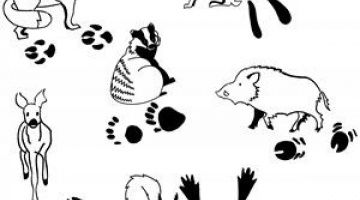Recognizing animal footprints can be very useful for many reasons. If you identify to which animals the footprints belong, you then know which animal lives in the surroundings. Also, you will know if you are exposed to a potential danger or if there is a watersource or food nearby.
1. Animals leave footprints from their passage on the ground : footprints of hoofs (boars and deers), hand-shaped footprints (squirrels and hedgehogs) and footprints of paws with pads (foxes, dogs and wolves).
Animals also leave their excrements behind them in which we can find seeds, bones, feathers or fur. It gives us information about animals living in the region, what they eat and everything in the surroundings. Animals often take the same wild paths. The size of the path gives an idea of the size of the animal.
Animals often leave footprints of claws or turned soil.
-
They often leave pieces of fur or hairs hooked to thorny bushes.
-
Some animals scratch or overturn the soil to mark their territories, others are looking for food..
-
During the coupling, deers rub their woods against tree trunks.
-
Wildboars enjoy wallowing in the mud and rub themselves against tree stumps.
-
Animals leave also footprints of their meals.
-
We find a lot of footprints on fir cones. The way the fir cone is eaten indicates a specific eater.
-
Places where we find several feathers indicates that animals butcher their preys before eating them.
Continue the walk by following the path indicated on the picture.
